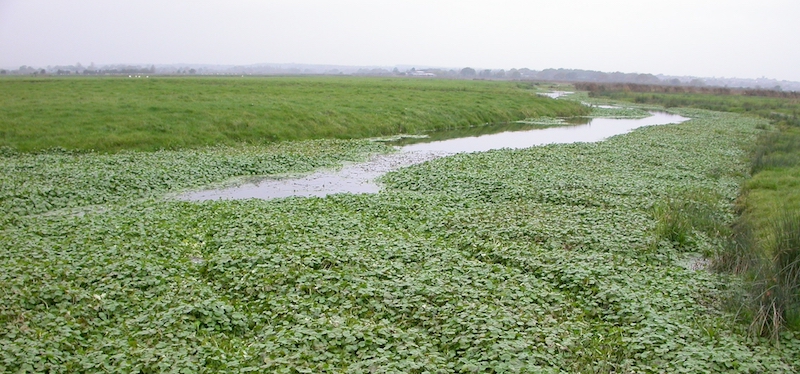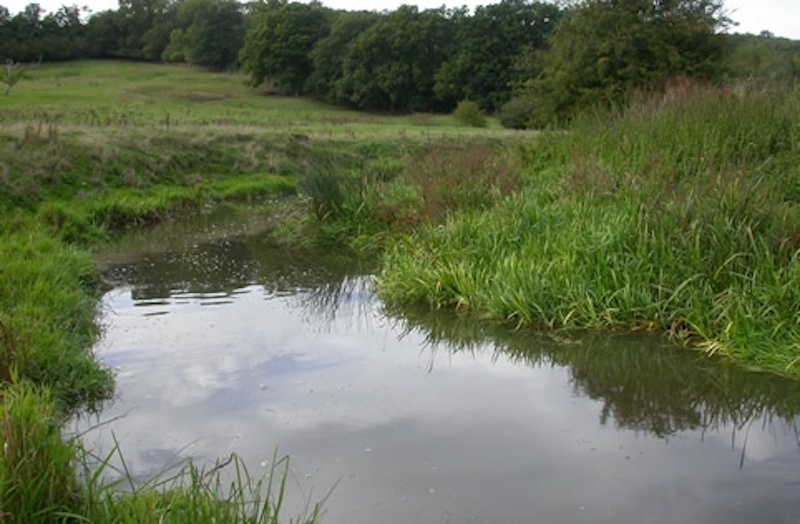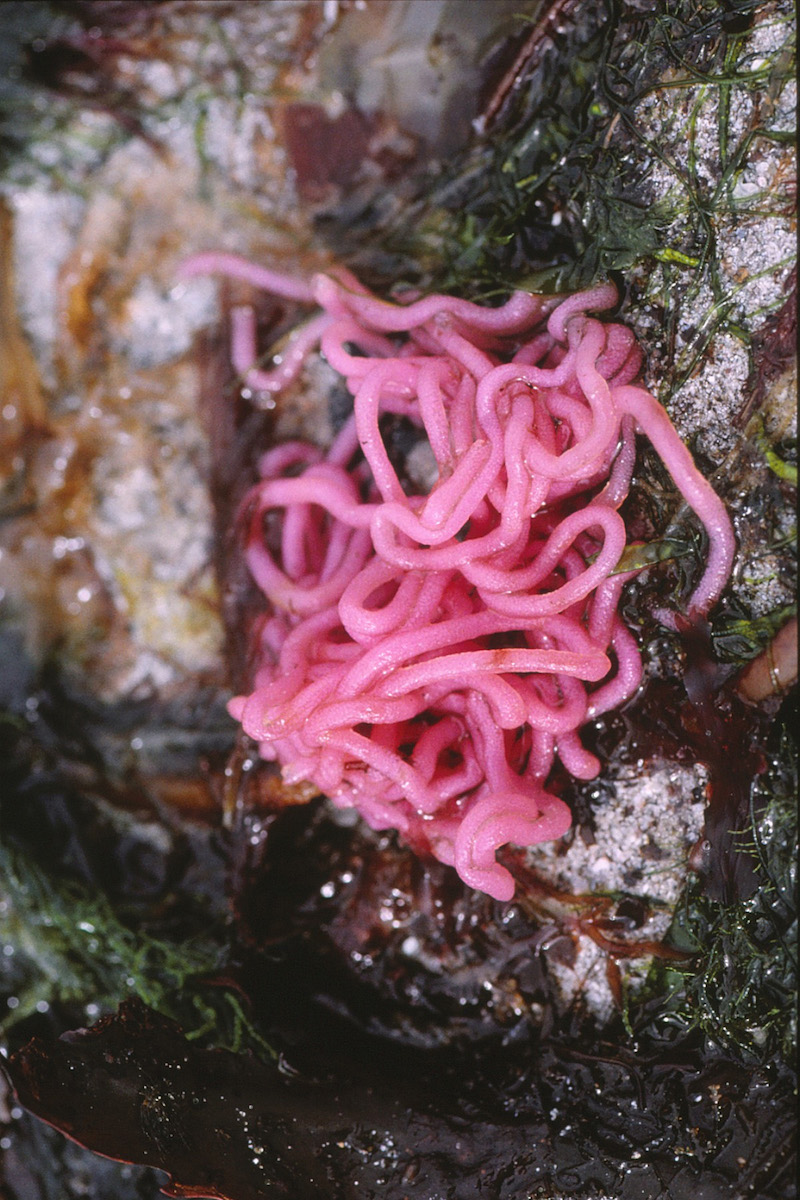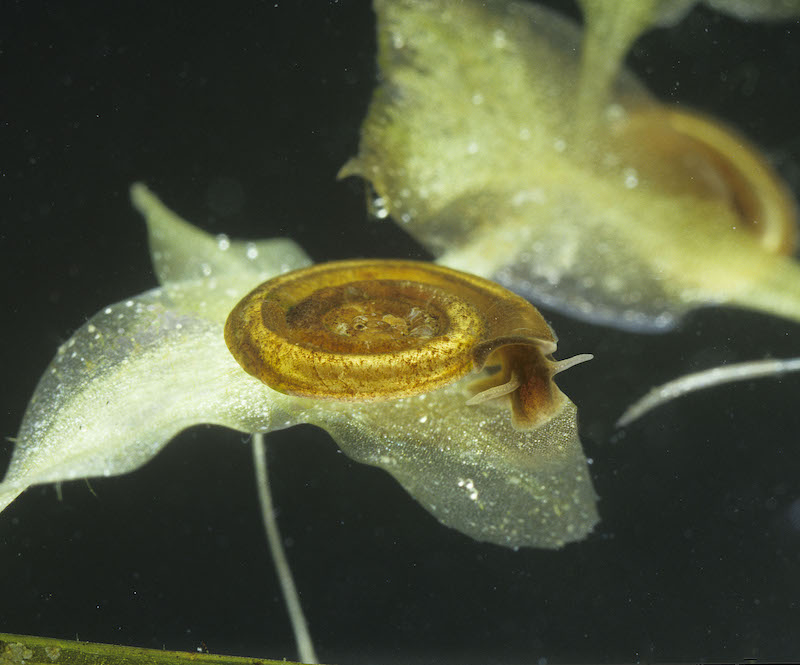|
A selection of some key items of interest from 2010 are described below:
Advice and help This has been given to many individuals and organisations including identification of specimens, conservation advice and habitat management. Specific examples include:
British Wildlife Molluscan ‘wildlife reports’ continued in 2010 with entries in February, June and October. The February issue discussed the 2008 non–marine recorder’s report (Mollusc World 20, pp. 20–22, July 2009), with its predominance of Irish records. A further observation noted that, of the 397 new vice–county records reported, 50% were for slugs and 12% comprised recently introduced species. Highlights from the Marine Recorder’s report of the same year (Mollusc World 20, pp. 15–16, July 2009) were also reported. June’s report included details of the successful campaign to conserve rare gastropods at St Aubin’s Harbour, Jersey (further details – this report below). The unusual mass copulation of common sea hares Aplysia punctata, observed on the shores of the outer Hebrides, was also reported and illustrated with images of chains of copulating individuals together with their pink spawn ‘strings’ (figure 3). October’s report discussed the recognition that Balea living in the UK, had recently been recognised as the two species B. heydeni and B. perversa. News of Barry Colville’s discovery of Granaria frumentum illyrica from the Isles of Scilly was also included, together with further records of the ghost slug Selenochlamys ysbryda at its first reported English site near Bristol. Futurescapes (‘Space for Nature, Land for Life’) On 7th June 2010 the Conservation Officer attended the launch of the new RSPB ‘Futurescape’ initiative. The conference, which was held in Westminster, was attended by about 140 delegates representing a wide range of governmental and non–governmental organisations. Futurescapes is the RSPB’s contribution to landscape scale conservation and this idea was introduced and explained with speeches delivered by Lord Henley (the Under Secretary of State at DEFRA with responsibility for Climate Change and Sustainability), Professor Chris Thomas, University of York and Dr Mike Clarke, RSPB Chief Executive. It is recognised that despite legislation designed to protect wildlife, biodiversity losses have continued and that, at present, many of the UK’s most threatened and vulnerable species are often largely restricted to habitat fragments, the majority of these lying within nature reserves or other protected areas. In addition to increasing the size of areas managed specifically for conservation, Futurescapes aims to find much more space for wildlife (especially vulnerable species) in the wider countryside, to allow it to coexist with other land uses such as agriculture, forestry, water–management, recreation and housing. It was emphasised that many habitats have become fragmented resulting in isolated, genetically vulnerable populations particularly those (like many Mollusca) with poor powers of dispersal. The creation of larger habitat units might also help species adapt to climate change by assisting in species migration.
For Futurescapes to succeed, partnerships need to be established with other environmental groups, local communities, the private sector and relevant government authorities. Two partnership examples were described: the Forest of Bowland, Lancashire and the Wiltshire Chalk Grasslands. The initial 34 Futurescape areas include:
For further details on Futurescapes see www.rspb.org.uk.
Rare molluscs and harbour renovations at St Aubin’s Harbour, Jersey – a happy resolution! In my Conservation Officer report for 2009 I wrote of threats to the rare molluscs Truncatella subcylindrica and Paludinella littorina, inhabiting joints between the granite blocks of Aubin’s Harbour pier, Jersey. It was feared that essential maintenance involving infilling would destroy the snails. News of the threats to these molluscs reached the local Jersey press in late 2009 and the issue was still unresolved at the end of the year. Matters developed surprisingly rapidly and within less than three months of receipt of the initial representations, Jersey’s fiscal stimulus fund made £80,000 available for pier repairs. The announcement of this funding was accompanied by the good news that the pier’s molluscan importance had been acknowledged by the government. The Assistant Economic Development Minister, Senator Paul Routier, said, “Now the harbours team has worked out a way to complete the project within a period that meets the ‘timely’ objective of the fiscal stimulus fund, while also keeping the resident molluscs safe, I am pleased to be able to allocate this money to allow Jersey Harbours to bring the work forward”.
Ray Hine, Technical Services Manager for Jersey Harbours also said, “by using an alternative repair method called ‘stitching’, we can avoid disruption to the pier and minimise disturbance to the marine life, including the molluscs which are causing particular concern. ….. The stitching method involves drilling small diameter holes along the pier and infilling with steel rods and grout, providing a series of solid reinforcement anchors”. It is understood that the work on the pier was completed by then end of August 2010. The St Aubin’s mollusc campaign received a lot of praise on Jersey because it was considered to have been handled by all parties in a constructive and non–aggressive manner. It was a welcome surprise that the Jersey government took the plight of these two molluscs seriously and then acted in such a short time to find a (hopefully!) satisfactory solution for both the pier structure and the molluscan conservation; Jersey is to be congratulated! Biodiversity Action Plan – a request for lead partners for invertebrates in England: In my last report (Mollusc World 24: 23 – 24) I explained that the administration of the BAP system had changed, with most BAP responsibilities delegated to country level and with species conservation mostly being achieved by country ‘biotope’ groups (e.g. ‘coastal’, ‘upland’, ‘wetland’). In May 2010 the England Biodiversity Strategy Invertebrate Group put out a call for Lead Partners in England. Responses were being coordinated by Buglife. The Conchological Society expressed an interest in becoming involved with the scheme, perhaps not as a sole lead partner, but as part of a team of interested parties. It was pointed out that the Terrestrial Mollusc Steering Group (covering the UK and Eire) covered some of the lead partner role for the seven terrestrial BAP species (Vertigo moulinsiana, V. geyeri, V. genesii, V. angustior, Quickella arenaria, Vertigo modesta and Truncatellina cylindrica). It was suggested that the main BAP requirement was for representation for the freshwater BAP species (excluding the pearl mussel Margaritifera margaritifera which has its own steering group). These species include Pseudanodonta complanata, Pisidium tenuilineatum, Sphaerium solidum, Mercuria similis, Heleobia stagnorum, Gyraulus acronicus, Segmentina nitida, Valvata macrostoma, Anisus vorticulus, Omphiscola glabra and Myxas glutinosa. Most of these were previously covered by the now disbanded Freshwater BAP Molluscan Steering Group. It was suggested that the Conchological Society might therefore adopt some shared lead partner role for at least some of these species. This lead partner initiative will be further considered in 2011.
Anisus vorticulus – possible Special Areas of Conservation (Natural England Consultation 2010) The little whirlpool ram’s–horn snail Anisus vorticulus (figure 4) is the most protected non–marine species living in the UK! This species lives in the unpolluted waters in grazing marshes ditches. In addition to being a UK BAP priority species, in 2004 the snail was added to the EU Habitats Directive under Annex IIa and IV in recognition of its vulnerable or endangered status in many European countries. Placement on Annex IIa requires member states to designate Special Areas of Conservation (SACs) for species, whilst Annex IV entails strictest protection. This means that licences are needed to collect and possess specimens whilst a range of obligations are required of landowners with the species living on their land.
In autumn 2010 Natural England (NE) launched a consultation process to consider SAC options for the snail. The Conservation Officer worked closely with other Society members and Buglife and many other individuals (including Dr Roy Baker and Prof. Steve Ormerod) to consider NE’s proposals. During the consultation process the SAC areas proposed by NE were carefully studied. These included most of the Arun Valley in West Sussex, many areas in the Broads area of Norfolk and the Pevensey Levels, East Sussex. In response to these proposals all recent A. vorticulus records were considered. As a result it was suggested that a few further sites be added from both the Arun Valley and Norfolk. Encouragingly all of the Pevensey Levels SSSI was included in the initial NE proposals. As only about 20% of this area has been surveyed in detail (Willing 2010) for A. vorticulus, it is highly likely that further populations exist. The precautionary measure of including the whole Pevensey area is therefore to be welcomed.
It was also suggested that a former A. vorticulus site located near Staines, the only one for the Thames Valley, should also revisited to check if this isolated population remains. Prof. Steve Ormerod stressed the importance of trying to ensure that large contiguous areas of habitat be maintained as the snail has poor powers of natural dispersal (Niggerbrugge et al 2007). He also stressed the importance of maintaining as many populations of the snail as possible because significant genetic differences exist in A. vorticulus populations both between different areas of the country but also within some regional blocks (Mensch et la 2010).
A joint Buglife – Conchological Society response document was submitted in mid–November; the outcome of the SAC consultation is expected in early 2011.
Anisus vorticulus – the development of a monitoring protocol In addition to the SAC consultation, Natural England also required assistance in the development of a management protocol for landowners, managers and others with A. vorticulus populations present on their land. Work led by Buglife is ongoing with detailed inputs from the Conservation Officer and other Society members. Work is ongoing and the protocol will be completed in 2011.
Associations with other organisations: The Conservation Officer continues to attend conservation committee meetings of The Sussex Wildlife Trust. Links with a wide variety of other governmental and NGO organisations are maintained through membership of Invertebrate Link. Throughout 2010 the Society undertook several joint initiatives with The Invertebrate Conservation Trust (Buglife); links with the Trust have been of considerable mutual benefit to both organisations.
References Mensch, S., Symondson, W., Bruford, M., Willing, M. & Ormerod, S.J. (2010) Population genetics of three threatened snail species in southern English grazing marsh. Natural England Research Report Niggebrugge, K., Durance, I., Watson, A., Leuven, R.S.E.W. & Ormerod, S.J. (2007) Applying landscape ecology to conservation biology: spatially explicit analysis reveals dispersal limits on threatened wetland snails. Biological Conservation. 139: 286 – 296. Willing, M.J. (2010) The survey and monitoring of populations of the Little Whirlpool Ram’s–horn Snail on Pevensey Levels (2007 & 2008). Unpublished report to Environment Agency, Bristol. |
figure 1: Ditch covered with floating pennywort, H. ranunculoides. (Photo: Martin Willing)
figure 2: Pseudanodonta complanata and habitat on the River Arun near Pulborough, West Sussex. (Photo: Martin Willing)
figure 3: Sea hare (Aplysia punctata) – chain of mating adults (left) and spawn chain (right). (photos: Lee Thickett)
figure 4: A. vorticulus. (photo: Paul Sterry / Nature Photographers) |
Hon Conservation Officer: Annual Report 2010
Issue
27
Page
28






